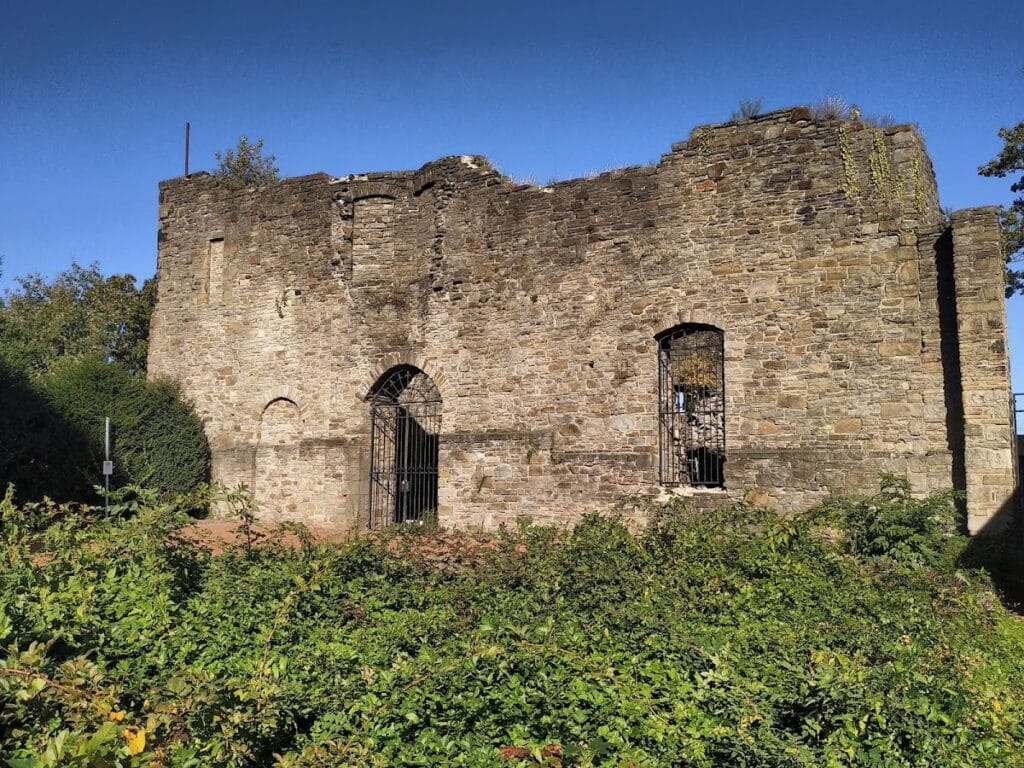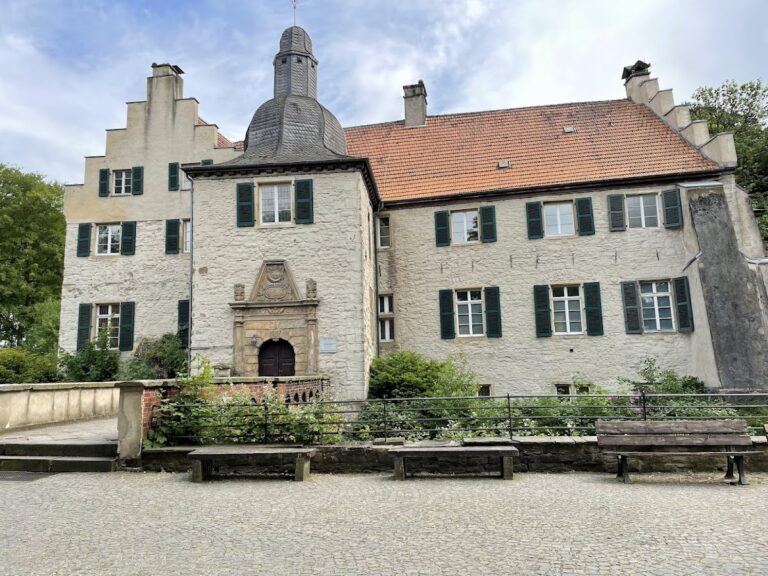Burg Wetter: A Medieval Castle Ruin in Germany
Visitor Information
Google Rating: 4.3
Popularity: Low
Google Maps: View on Google Maps
Country: Germany
Civilization: Medieval European
Remains: Military
History
Burg Wetter is a medieval castle ruin situated near the town of Wetter in modern Germany. It was established by the Counts of Mark, a noble family who controlled the surrounding territory in the 13th century.
Construction of the castle took place between 1250 and 1274 on a ridge of the Ardeygebirge hills, around 100 meters above sea level. Positioned to overlook the Ruhr River and the area of Harkortsee, the castle was likely intended as a military stronghold facing the Electorate of Cologne’s castle Volmarstein located across the river. This strategic placement indicates the tense relations between regional powers during this period.
In early 1274, specifically on January 28, Count Engelbert I of Mark transferred ownership of the castle to his son, Eberhard I of Mark, as a marriage gift to Eberhard’s bride, Irmgard von Berg. Following this, from roughly the year 1300, Burg Wetter became an administrative center for the Amt Wetter, the local district government. Its role expanded in 1324 to include administration for the nearby Amt of Volmarstein as well.
The castle’s attached settlement gained the official status of a Freiheit in 1355. This designation offered inhabitants limited self-rule, the ability to hold local judicial proceedings, and the right to elect their own mayor, indicating an evolving civic structure under the Counts of Mark. During the mid-15th century, Burg Wetter witnessed military conflict in the Soest Feud (1444–1449), a power struggle involving surrounding territories. At this time, the castle was held by Craft Stecken, a representative of the Counts of Mark, and suffered a siege by forces from Cologne and allied Bohemian troops.
After the 16th century, Burg Wetter gradually lost its military and administrative significance, leading to its decline and eventual abandonment as a residence or stronghold. In the early 19th century, the castle found a new purpose. In 1818, Friedrich Harkort, together with Heinrich Kamp and the English engineer Edward Thomas, founded one of the Ruhr region’s first machine factories inside the vacant castle grounds. Initially called Mechanische Werkstätten Harkort & Co., the factory focused on producing steam engines and gas lighting equipment. By 1824, it was known as Harkort, Thomas & Co. This industrial phase marked a distinctive chapter in the castle’s long history. Today, the ruins of Burg Wetter are preserved as protected historical sites and are recognized for their cultural importance within the local heritage.
Remains
Burg Wetter’s remains reflect its original function as a hilltop fortress, situated on an elevated ridge roughly 40 meters above the nearby Harkortsee reservoir amidst the Ardeygebirge foothills. The core of the ruins centers on the remains of a bergfried, a type of tall, fortified tower common to medieval castles, which served primarily as a defensive lookout and last refuge in battle. This tower stands as the most prominent surviving structure on the site.
Notable remnants include heraldic symbols integrated into the castle’s entrances and towers. One entrance features a coat of arms accompanied by the date 1274, marking the castle’s founding period or significant renovation. Another tower presents a distinct coat of arms dated 1714, pointing to later alterations or commemorations within the castle complex. These heraldic details provide visual evidence of the castle’s enduring relationship to its noble owners and historical milestones.
The ruins, though fragmentary, have been maintained as cultural monuments and protect the memory of the site’s medieval origins and later industrial use. Though detailed descriptions of architectural layouts, construction materials, or decorative elements such as mosaics or inscriptions are not documented, the visible remains retain their original setting. Their elevated position offers sweeping views over the Ruhr valley and surrounding landscape. This scenic setting underlines the castle’s strategic placement and reveals why the location was selected for defensive purposes centuries ago.
No archaeological artifacts like tools or ceramics have been recorded at the site, and the ruins stand primarily as stone structures illustrating the castle’s hilltop fortress character and layered history from medieval stronghold to industrial estate.







